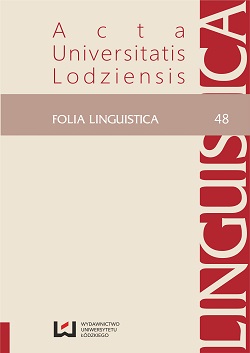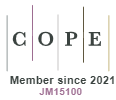Językowa konceptualizacja czasu w tynieckim przekładzie Biblii
DOI:
https://doi.org/10.18778/0208-6077.48.10Słowa kluczowe:
Biblia, połączenia słowne z wyrazem czas, przekład, schemat kulturowy, wyrażenie, wzorzec myślowyAbstrakt
This article attempts to characterise various verbal connections with the word time in Tyniec translation of the Bible. Expressions with the word time give ample material, allowing for multi-linguistic analysis, it is more than 800 examples of the word time (684 in the Old Testament and 160 in the New Testament), after taking account of other word units associated with the determination of time, it is more than 4,000 word units.
Expressions with the word time in Polish edition of the Bible reflect the mind-set and culture, manifested in the Polish language, of course, inextricably linked with the biblical Semitic motivations. Time in the Bible is thus conceptualized as a measurable physical quantity, synthesizing different units of measure: size, length, but also the weight (e.g. hard times), a certain continuity of religious events focused on eternity and as a sacred cycle. The clearest expression seems to be the right time, understood as a convenient, appropriate moment.
Pobrania
Bibliografia
Bańkowski A., 2000, Słownik etymologiczny języka polskiego, Warszawa, t. 1.
Google Scholar
Biblia Hebraica, 1945, ed. R. Kittel, A. Alt, O. Eissfeldt, Stuttgart.
Google Scholar
Biblia Jerozolimska, 2006, Poznań.
Google Scholar
Długosz-Kurczabowa K., 2003, Słownik etymologiczny języka polskiego, Warszawa.
Google Scholar
Koziara S., 1993, Pojęcia wartościujące w polskich przekładach Psałterza, Kraków.
Google Scholar
Léon-Dufour X., 1990, (red.), Słownik teologii biblijnej, tłum. K. Romaniuk, Poznań.
Google Scholar
Lurker M., 1989, Słownik obrazów i symboli biblijnych, Poznań.
Google Scholar
Novum Testamentum Graece et Latine, 1951, ed. A. Merk, Romae.
Google Scholar
Od Biblii Wujka do współczesnego języka religijnego, 1999, red. Z. Adamek, S. Koziara, Tarnów.
Google Scholar
Pisma Świętego Starego i Nowego Testamentu z języków oryginalnych, 1975, oprac. przez Komisję Przekładu Pisma Świętego, z inicjatywy Brytyjskiego i Zagranicznego Towarzystwa Biblijnego, Warszawa.
Google Scholar
Pismo święte Starego i Nowego Testamentu w przekładzie z języków oryginalnych, 1965, oprac. zespół biblistów polskich z inicjatywy Benedyktynów Tynieckich, Poznań – Warszawa.
Google Scholar
Price H., 1997, Strzałka czasu i punkt Archimedesa. Nowe kontrowersyjne spojrzenie na czas i współczesną fizykę, przekład P. Lewiński, Warszawa.
Google Scholar
Grzegorczykowa R., 2006, Polskie przymiotniki temporalne na tle ogólnej językowej konceptualizacji czasu, w: Język a kultura, red. A. Dąbrowska, A. Nowakowski, Wrocław, t. 19, s. 33-44.
Google Scholar
Rokoszowa J., 1989, Czas a język. O asymetrii zjawisk językowych, Kraków.
Google Scholar
Sawicka G., 2006, Co czas „robi” z językiem?, w: Język a kultura, t. 19: Czas, język, kultura, red. A. Dąbrowska, A. Nowakowski, Wrocław, s. 11-32.
Google Scholar
Szagun D., 2011, Kategoria czasu w „Biblii Tysiąclecia” na tle „Biblii” Jakuba Wujka (próba porównania), w: Zielonogórskie Seminaria Językoznawcze 2010, red. nauk. S. Borawski, M. Hawrysz, Zielona Góra, s. 181-196 .
Google Scholar
Szulakiewicz M., 2008, Religia i czas, Toruń.
Google Scholar
http://sjp.pwn.pl/szukaj/czas [pobrano 15.05.2010].
Google Scholar
Pobrania
Opublikowane
Jak cytować
Numer
Dział
Licencja

Utwór dostępny jest na licencji Creative Commons Uznanie autorstwa – Użycie niekomercyjne – Bez utworów zależnych 4.0 Międzynarodowe.










